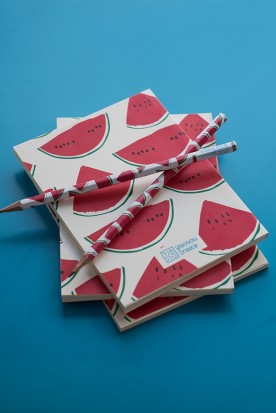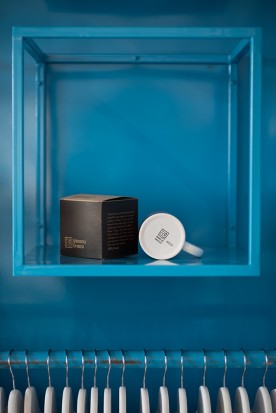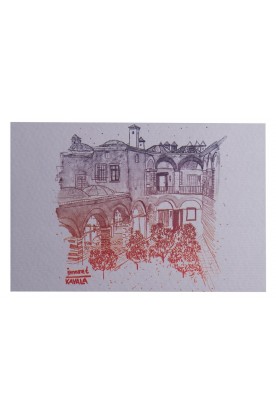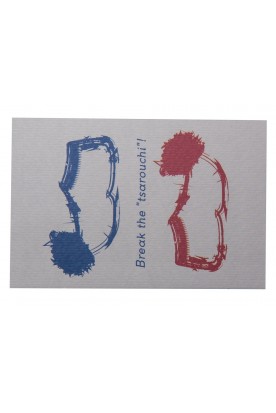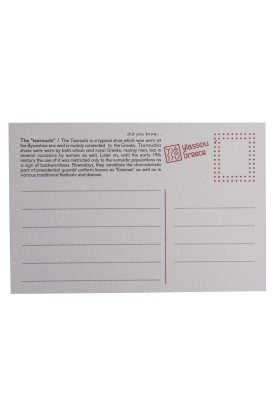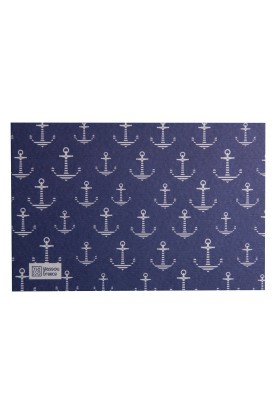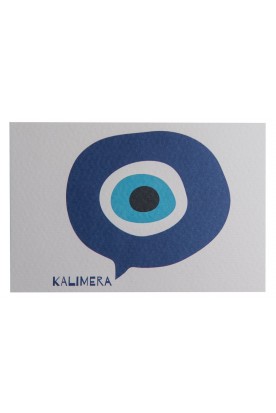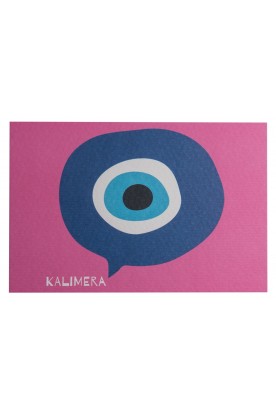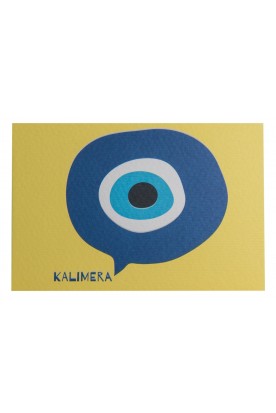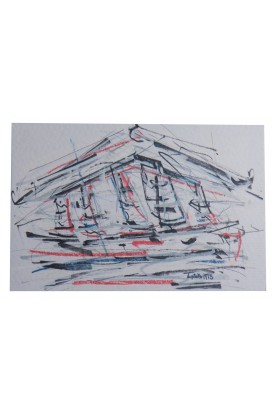MEMORABILIA
-
This handmade pencil is a great gift for children, students or pencil collectors! Choose one of our handmade notebooks and bookmarks to create a perfect stationery set! Learn More
Out of stock
-
THE WHITE "MATI" MUG
€12.00Pour your morning coffee in this 100% porcelain 'Mati' mug ,100% made in Greece. With the bright blue design, it will help you start your day with a smile as it greets you with the warm Greek "Kalimera!" ! Learn More -
Did you know....?
- "Imaret" is a historical monumentum on the hill of "Panagia" right in the middle of the historical district. Mohamed Ali Pasha, the founder of modern Egypt was born in Kavala. In 1813 he donated to his hometown the construction of an impressive complex of public buildings including Imaret. The Ottomans developed such institutions to support educational, social and religious needs of the Muslim population. Kavala's Imaret served free food –hot soup- until 1923. Right after Muslim's departure, it started to host refugees from Minor Asia.
Out of stock
-
Did you know...?
- Tsarouchi is a typical shoe which was worn at the Byzantine era and is mainly connected with the Greeks. Tsarouchia shoes were worn by both urban and rural Greeks, mainly men, but in several occasions by women as well. Later on, until the early 19th century the use of it was restricted only to the nomadic populations as a sign of backwardness. Nowadays, they constitute the characteristic part of presidential guards' uniform known as 'Evzones' as well as in various traditional festivals and dances.
Out of stock
-
Did you know..?
- The ancor is one of the main parts of a ship and is related to its safety since the ancient times. During Christian time it was a symbol of salvation and hope. The anchor also symbolized stability and strength not only in territories that where strongly connected to the sea, but also in populations that lived in the mainland. Locals used to wear jewels that depicted an anchor or get anchor tattoos.
Out of stock
-
Did you know...?
- The belief in 'mati' dates back almost 3000 years to classical antiquity and ancient Greece. The symbol and superstition of 'mati' is one of the strongest symbolic images in the whole world. According to the tradition, protection against bad luck and negativity is easy to come by with 'mati' charms that can be worn, carried or hung in homes and working places.
Out of stock
-
Did you know...?
- The belief in 'mati' dates back almost 3000 years to classical antiquity and ancient Greece. The symbol and superstition of 'mati' is one of the strongest symbolic images in the whole world. According to the tradition, protection against bad luck and negativity is easy to come by with 'mati' charms that can be worn, carried or hung in homes and working places.
Out of stock
-
Did you know...?
- The belief in 'mati' dates back almost 3000 years to classical antiquity and ancient Greece. The symbol and superstition of 'mati' is one of the strongest symbolic images in the whole world. According to the tradition, protection against bad luck and negativity is easy to come by with 'mati' charms that can be worn, carried or hung in homes and working places.
Out of stock
-
Did you know...?
- The belief in 'mati' dates back almost 3000 years to classical antiquity and ancient Greece. The symbol and superstition of 'mati' is one of the strongest symbolic images in the whole world. According to the tradition, protection against bad luck and negativity is easy to come by with 'mati' charms that can be worn, carried or hung in homes and working places.
Out of stock
-
We should buy new eyes to come closer to my painting series "SYTHEMELA" limited edition.The inaccessible austerity divorces the myth from the admiration with the diagonal help of experience. The hardness of the figure has got no relation to an iconic revolt. My writng talks on the borders between untouchable and reality's shivers
THOMAS TOURNAVITIS


